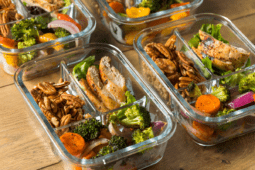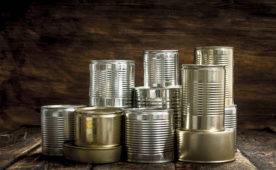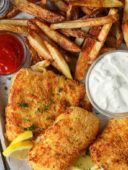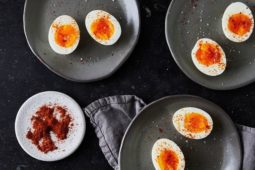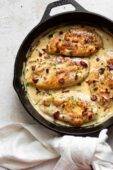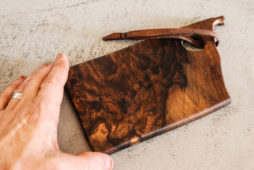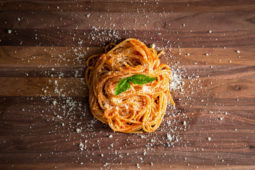How to: The Easiest Way to Make Carbonated Cocktails at Home
Friends, it's time to step up your home cocktail game. But it's not about procuring a special bottle of small batch spirits, or some crafty house-made infusion, or even an obscure, esoteric bitter liqueur made by monks in the mountains of Europe. In fact, it's not about the ingredients of the drink at all. It's about texture.
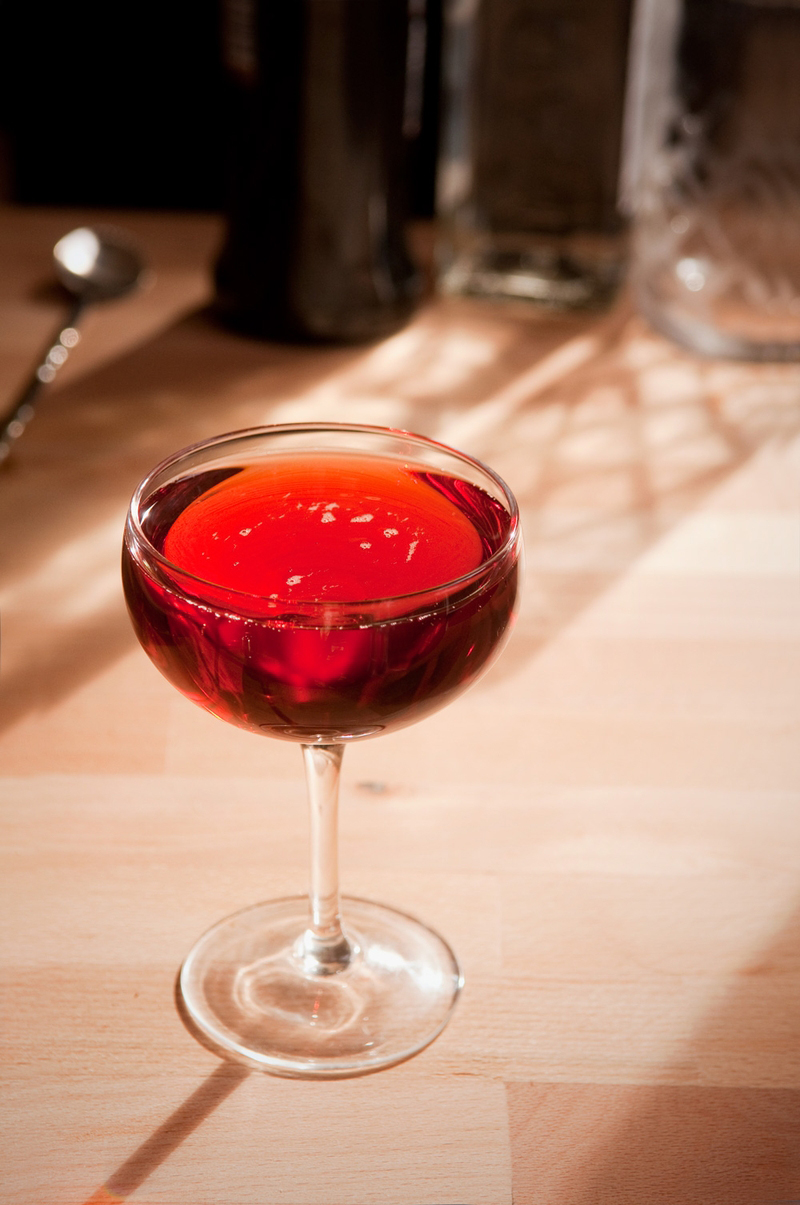
Carbonating cocktails adds effervescence, tingling the tongue and bringing out new flavors and drinking experiences. Club soda is traditional, and it works, but waters down the drink, and often just floats on top, never fully integrating with the heavier alcohol. There are brands that tried to make carbonated cocktail systems. Unfortunately, the “at home” version – the iSi Twist 'n Sparkle – was recalled for exploding all over the user, and the Perlini systems, while still available, cost anywhere from $350 to $5,000.

That leaves the common home carbonation system we're all aware of: the Sodastream. You can buy one for around $70, and use to create carbonated water on demand. (Which at my house, is a lot). I've seen these as low as $45 on sale.
Of course, if you read the manual, Sodastream forbids carbonating anything other than water, and for good reason. If you need a reason why not to fill it up with wine or booze, then, well, just watch this guy.
The problem here is the sugar found in all fermented beverages. It holds the carbon dioxide differently than water, and creates too much pressure.
Even if you could safely carbonate a bottle full of cocktail, in order to get the bubbles in, you'd need to fill the vessel until the nozzle enters the liquid…and while it might be, um, fun to have twenty ounces of fizzy cocktails, that's a lot of booze, and therefore expensive, and unless your making drinks for a crowd, wasteful. Also, as demonstrated above – dangerous. So, we gotta hack the Sodastream to pull this off safely.
There is a way to carbonate a single cocktail at a time: to add just as much fizz as needed, and keep everything from exploding. The solution lies in the hardware store.
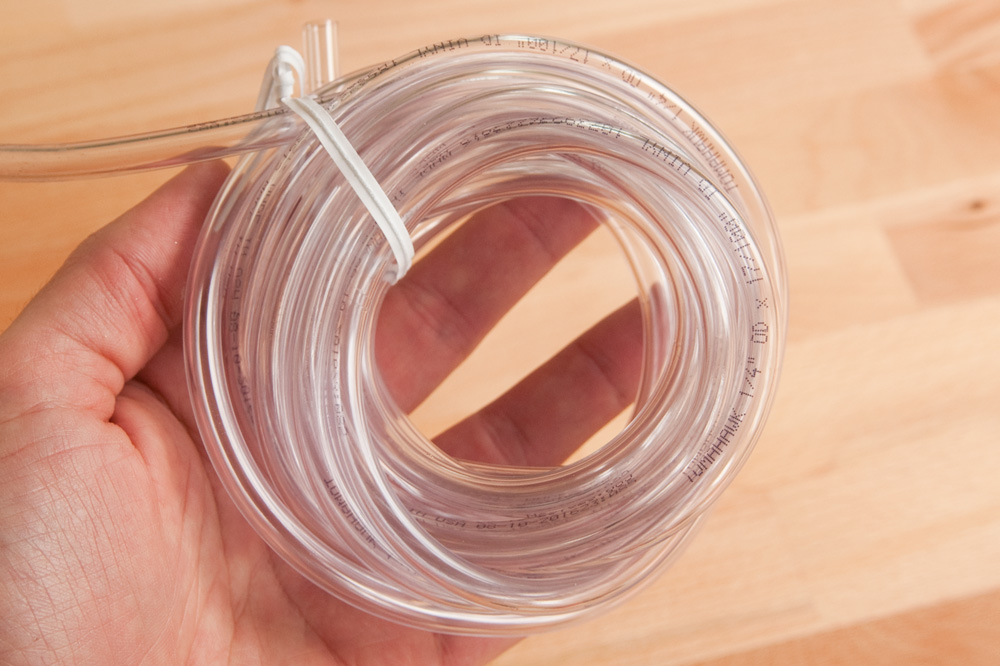
Head to the plumbing aisle, and pick up some clear plastic tubing. This only requires about 40¢ worth, if you can buy it by the foot. The size you want is a standard 1/4″ outer diameter with a 17/100″ internal diameter (how's that for a fraction?)
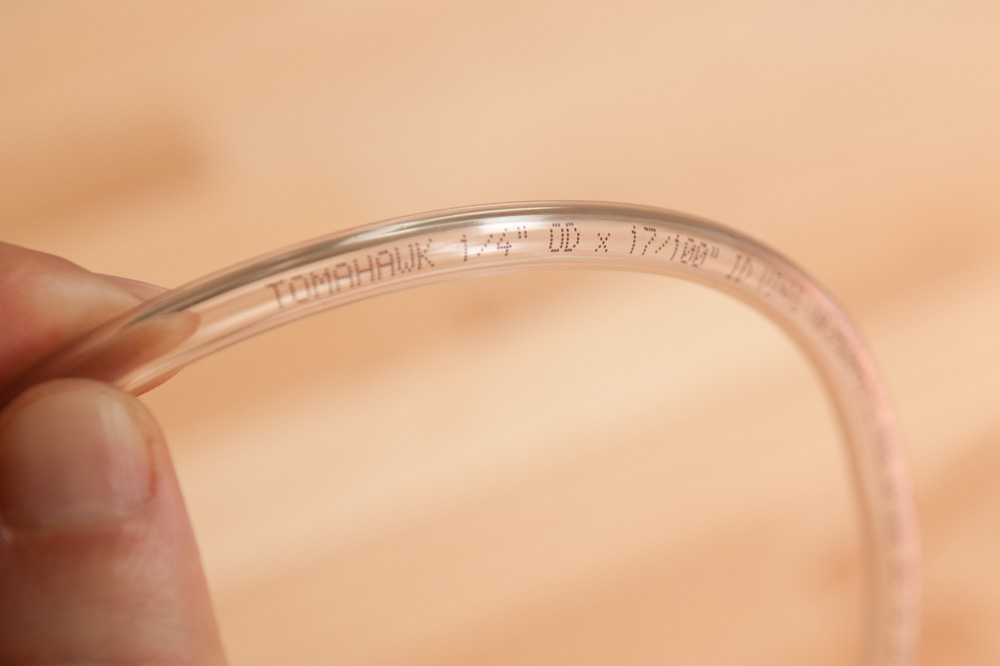
This fits my machine perfectly, but it's about six years old at this point. In case they've changed the size, just bring your SodaStream along with you to the hardware store.
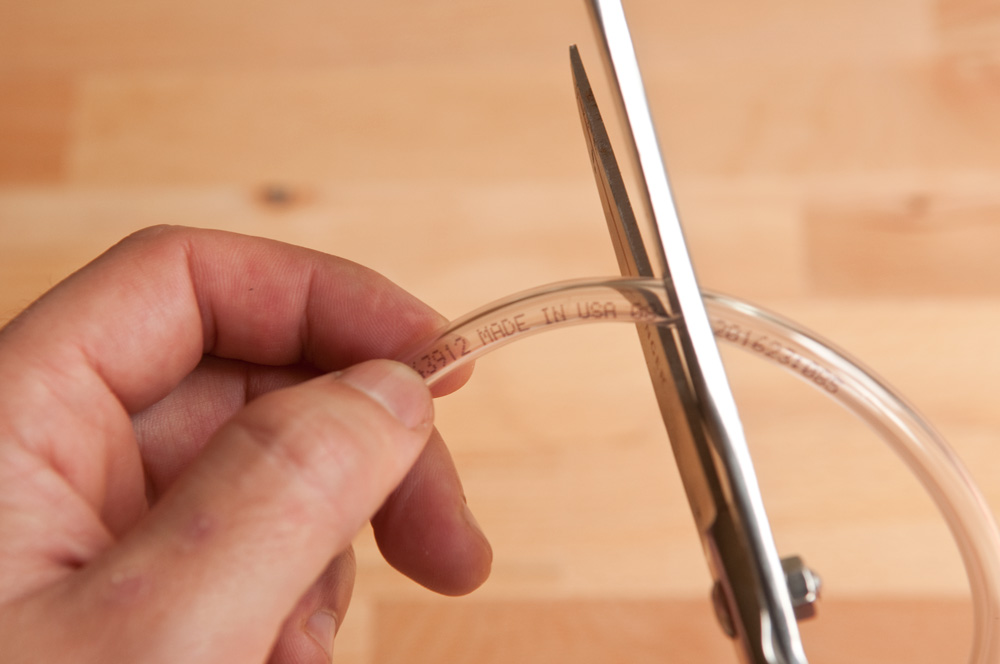 When you get home from the hardware store, cut your bottle to rough length, about 10″ depending on your Soda Stream design.
When you get home from the hardware store, cut your bottle to rough length, about 10″ depending on your Soda Stream design.
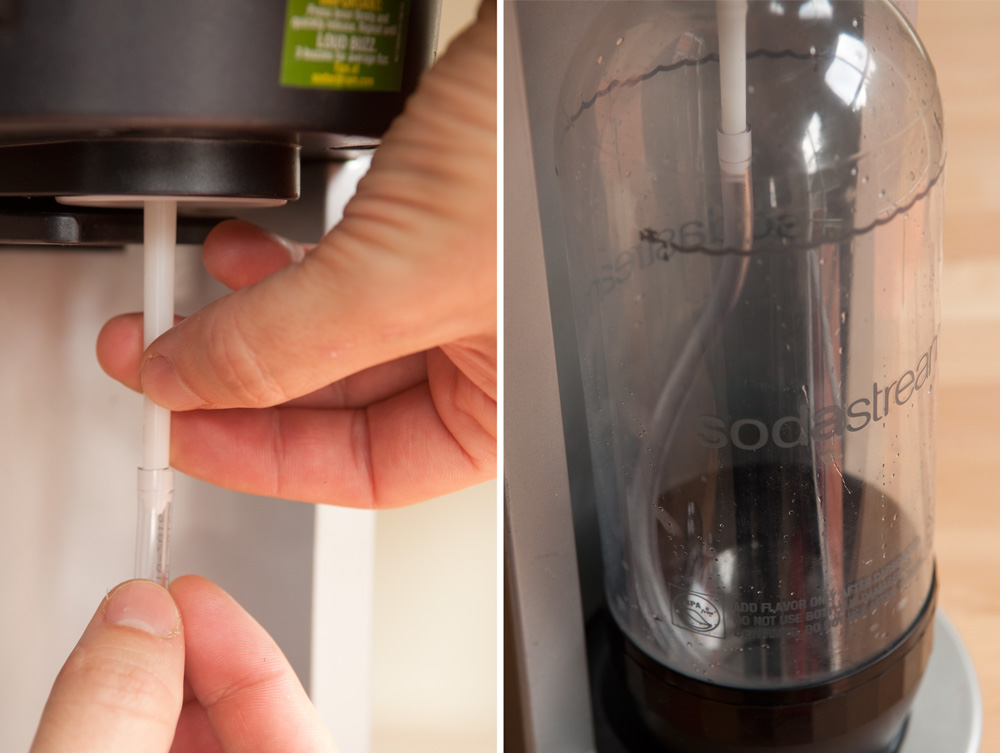
Then, affix it to your nozzle. Pour 3-4 oz of water in your bottle (average cocktail size), and twist it on. Note where the tubing meets the liquid, and cut it to final length. You want it to be just below the surface, at a similar distance to where the normal nozzle meets the water fill line.
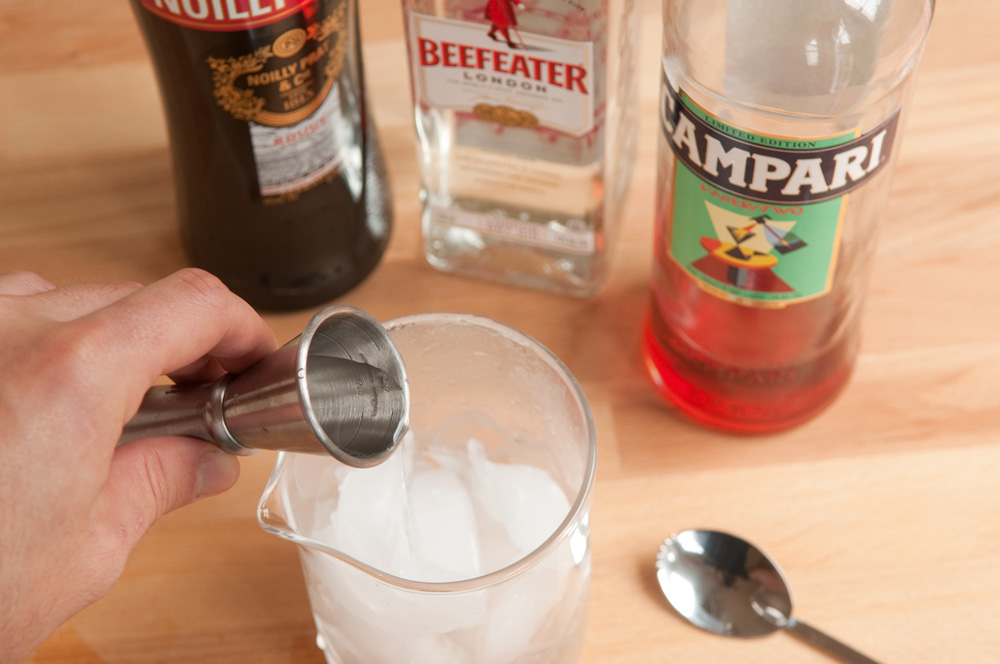
Then, create a cocktail. We're making a Negroni here, because 1) a carbonated Negroni sounds delicious, and 2) it has typical sugar levels for testing.
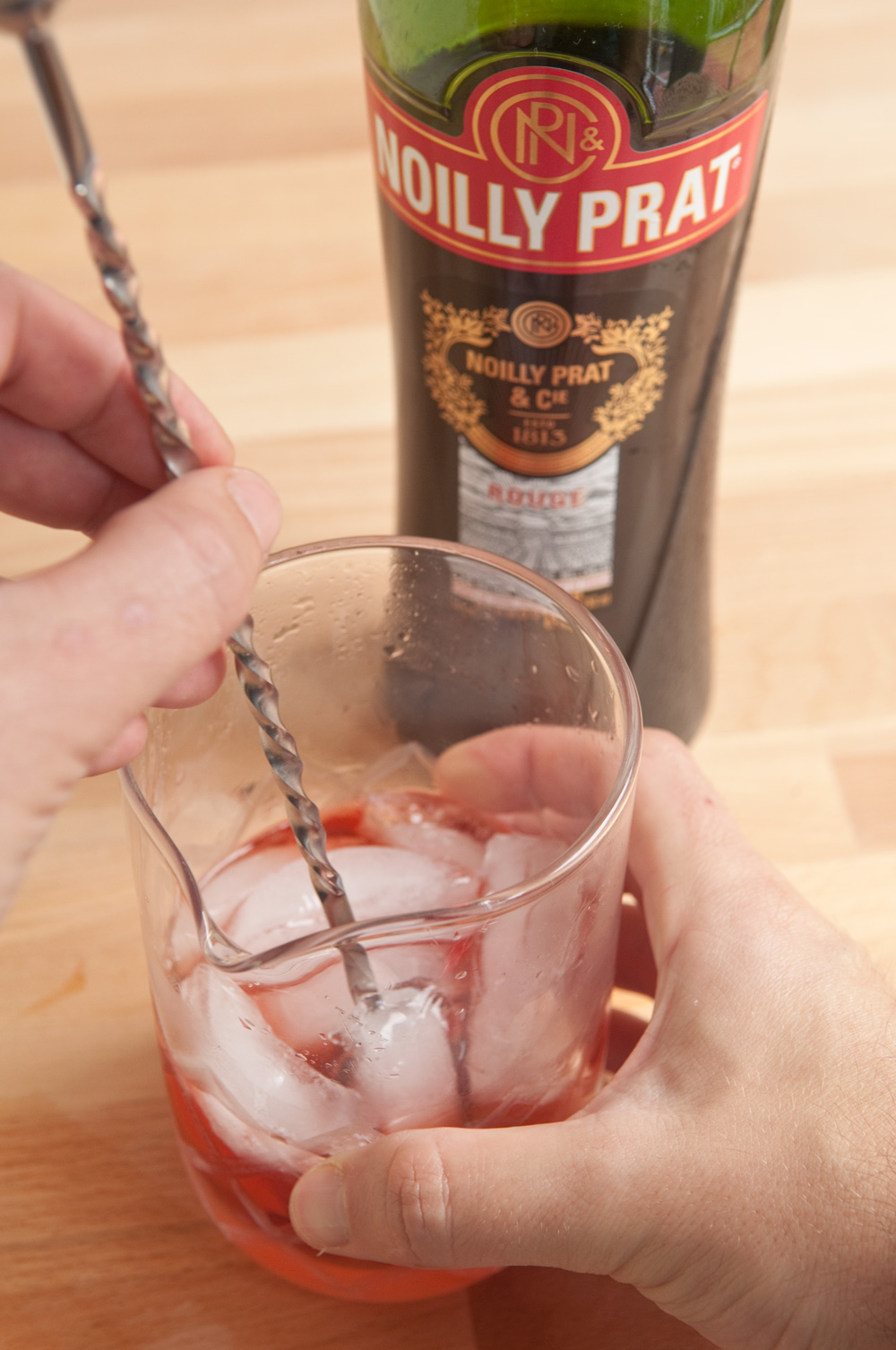
Measure out your portions, then shake or stir thoroughly to chill. Whether your cocktail will be served on the rocks or up, cold liquids carbonate better than room temperature ones. And you don't want to shake or stir after carbonating, as it will rupture all the bubbles you just forced in there. So, this is your chance to chill it. Plus, the extra water from dilution will help aid bubble formation.
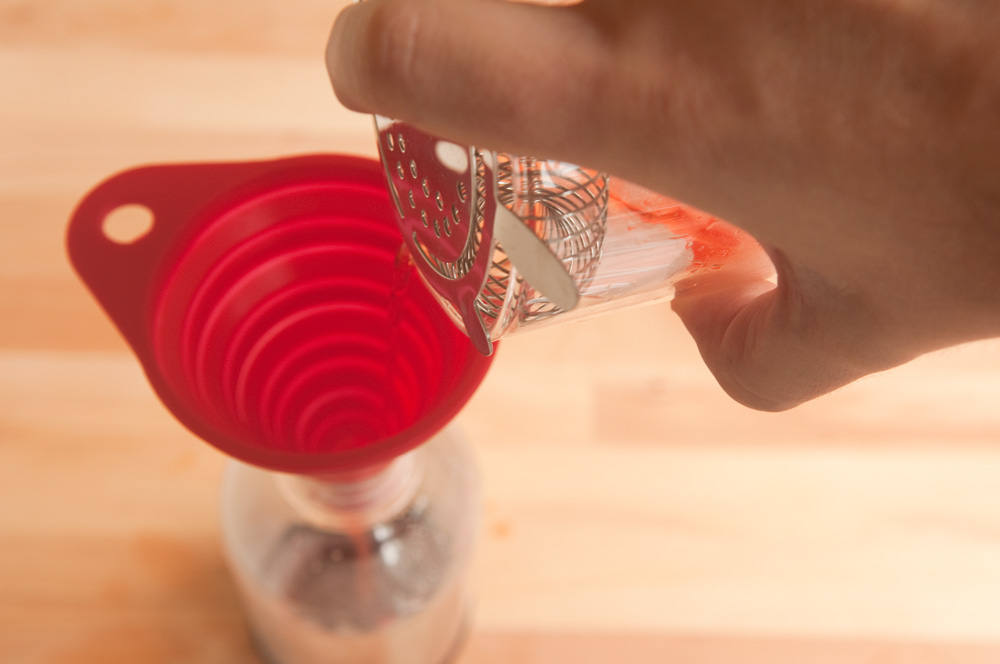
Use a funnel, or a very careful hand, to pour the cocktail into the SodaStream bottle.
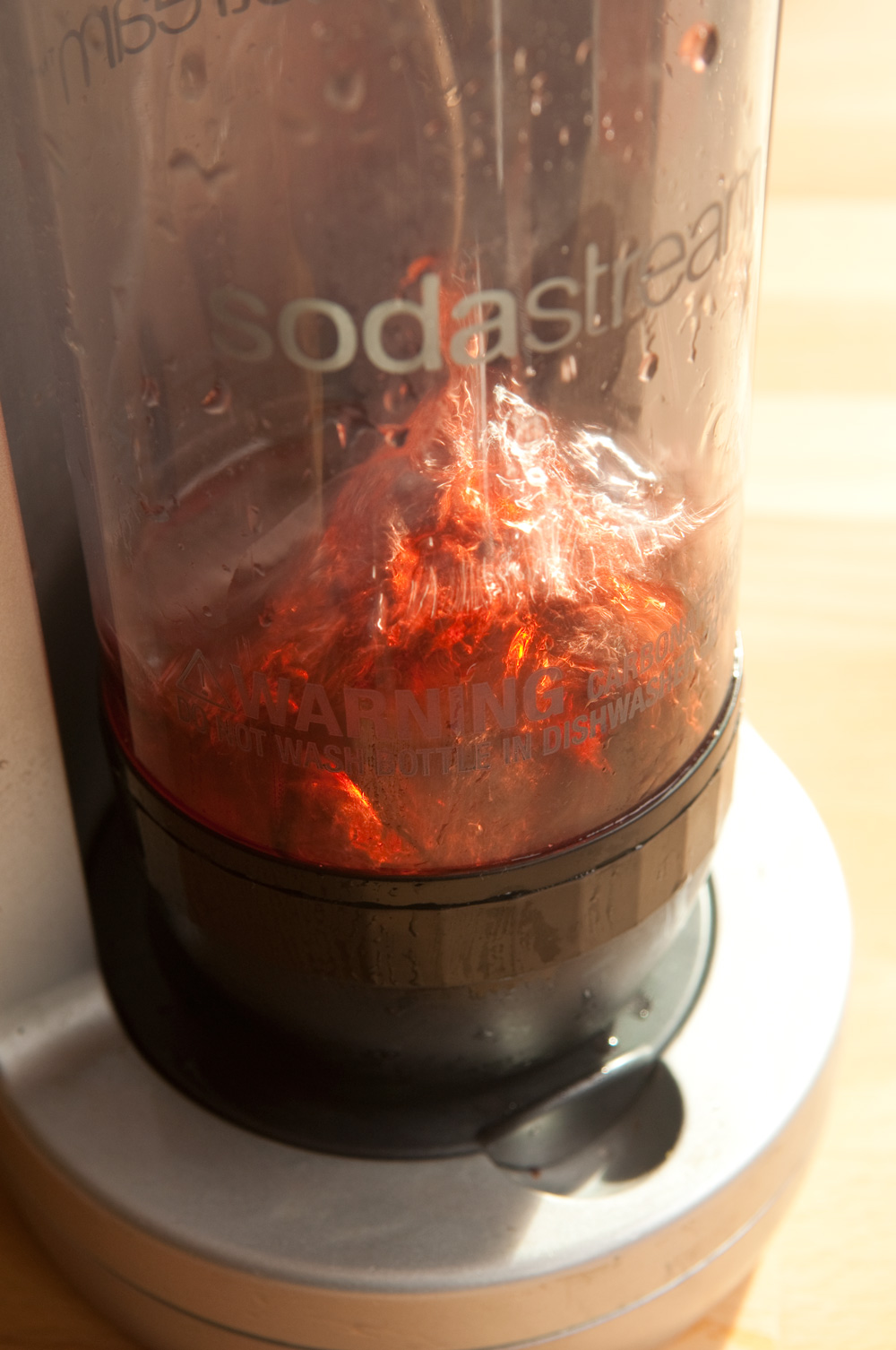
Now, carefully press the lever down in one second bursts three times. Release the gas pressure, then press it three more times.
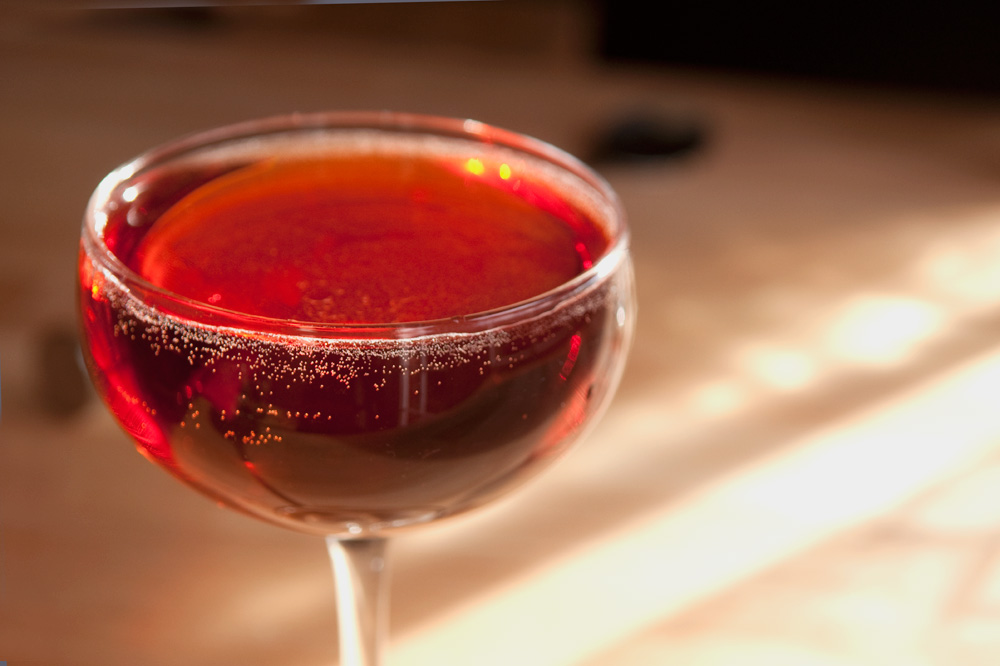
Pour the now fizzy liquid into a glass, a kaboom! You have a reasonably-sized, explosion free carbonated cocktail. Try it with any drink that possesses a medium amount of sugar – a margarita, a Sidecar, a Vesper, a fresh Gimlet, Boulevadier, or a club soda free version of a mojito or Tom Collins.

